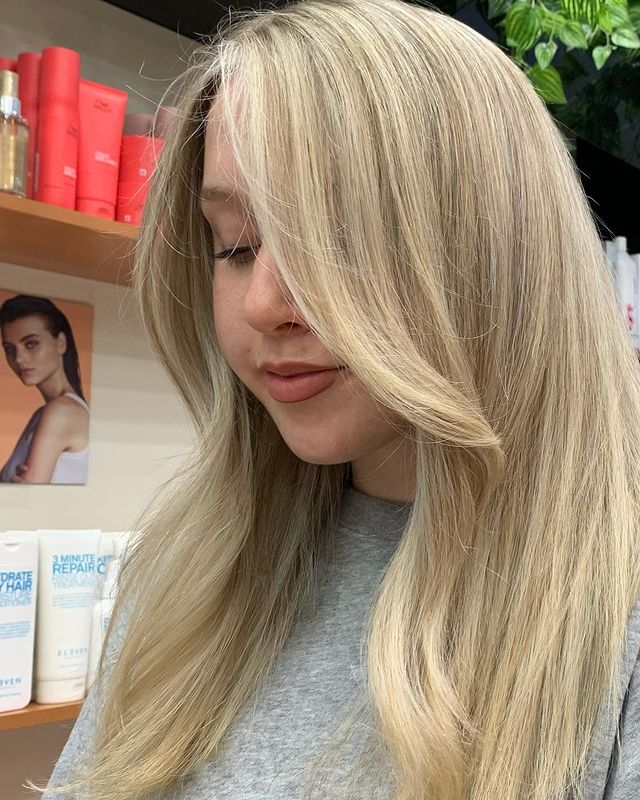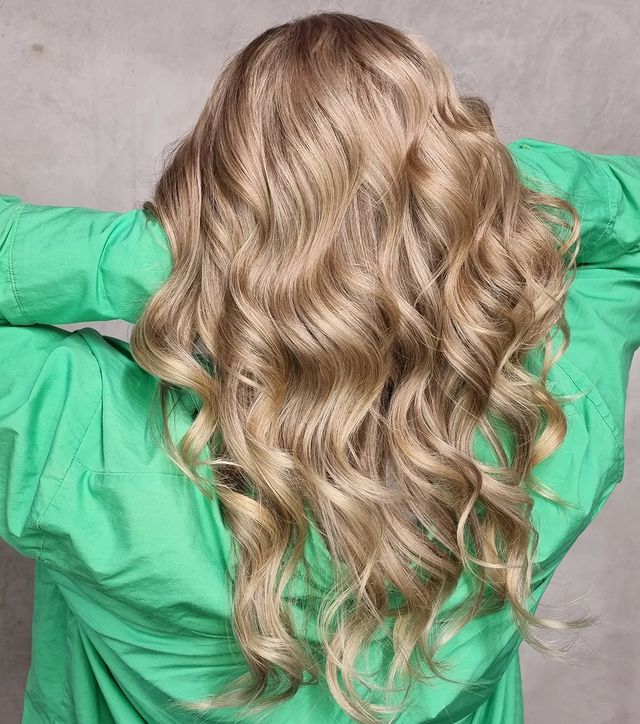Common Questions When Bleaching Your Hair

Bleaching can transform your look and open up a world of vibrant hair colours. Whether you’re a first-time bleacher or a seasoned pro, our guide will answer the most frequently asked hair bleaching questions to help you make educated decisions about how to achieve your desired look while maintaining the health of your hair.
Learn how often you can bleach your hair, the best products to minimise damage, and how to reduce porosity for luscious locks.
What is Hair Bleaching, Really?
Hair bleaching is a chemical process that works its magic on the melanin – the pigment that gives your hair its natural colour. The bleach lifts your hair colour by breaking down these pigments, stripping your hair of its original shade. This creates a blank canvas that enables you to experiment with a variety of colours or enjoy the chic appeal of platinum blonde tresses.
With Cutters His and Hers Hairdressing’s hair bleaching solutions, this process is not just about changing hair colour; it’s about reinventing your style, making a statement, and celebrating your individuality.
Will Bleaching Damage My Hair?
The question of potential damage is a common concern when contemplating hair bleaching. Unfortunately, the bleaching process can cause some degree of damage to your hair.
Bleaching penetrates the hair shaft and removes the natural pigment (melanin) that gives your hair its colour. This process alters the structure of your hair, which can result in dryness, loss of elasticity, and in some cases, breakage.
At Cutters His and Hers Hairdressing, we believe that change should not come at the expense of your hair’s health. Our unique bleaching formulas are infused with nourishing ingredients that minimise damage.
While preventative care can protect your strands during bleaching, the key to a successful hair bleaching journey relies on diligent aftercare for your newly transformed tresses.
How Long Does the Bleaching Process Take?
When it comes to hair bleaching, there’s no universal one-size-fits-all timeframe. The process is unique to each individual, depending on your current hair colour and the lightness level you wish to achieve.
Typically, the salon bleaching process involves an initial consultation, the application of bleach, development time, and then rinsing and toning. With Cutters His and Her Hairdressing professional services, the process generally takes anywhere between 2-3 hours. However, if you’re starting with very dark hair and aiming for a platinum blonde, it may take multiple sessions spaced over several weeks to achieve your desired hair colour.
Speeding up the process can lead to subpar results or even hair damage. At Cutters His and Hers Hairdressing salons, we take the time needed to ensure the best results for your hair, ensuring that your bleaching journey is a positive and enjoyable experience.

How Often Should I Bleach My Hair?
Bleaching is not a process that should be repeated too frequently or without ample time between bleaching treatments because it chemically changes your hair structure.
Typically, stylists at Cutters His and Hers Hairdressing salons recommend waiting at least 4-6 weeks between bleaching sessions to maintain the integrity of your hair. This gap allows your hair time to recover and replenish its natural oils, minimising the potential for damage and breakage.
However, the frequency of salon visits will depend on how quickly your roots grow out. The primary focus of in-between touch-ups is on the roots rather than the entire length of your hair. This is to maintain the vibrancy of your hair colour and prevent noticeable regrowth at the roots.
Hair growth varies from person to person, but on average, hair grows about half an inch per month. So, if you’ve bleached your hair and there is a noticeable contrast between your natural root colour and the bleached hair, you may need to schedule touch-up appointments slightly earlier than the recommended six-week interval.
At Cutters His and Hers Hairdressing, we prioritise your hair’s well-being, providing expert guidance on managing your bleached hair and the frequency of salon visits. It’s all about striking the right balance between style and health.
What is Hair Toner, and Do I Need it After Bleaching?
If you’re trying to achieve a light blonde or platinum shade after bleaching, you may notice that your hair develops brassy or yellow undertones. This happens because when you bleach dark hair, it goes through various stages of lightening, and as the natural pigments are lifted, these warmer tones become more apparent. The brassy or yellow look can detract from your desired cool or ash blonde hue.
Hair toner is a product specifically designed to address these unwanted warm tones and restore the desired color to your hair. The toning process involves applying a semi-permanent color product to your bleached hair, which counteracts the warm tones by depositing complementary cool tones, such as silver, violet, or blue. For instance, a purple toner can counteract yellow tones, while a blue toner can help eliminate orange or brassy hues.
The toning process is relatively quick, and the toner is usually left on the hair briefly before rinsing it out. The result is a more balanced, neutral, and cooler hair color that complements your skin tone and enhances the overall look.
Do I Need to Take Extra Care of Bleached Hair?
Bleached hair tends to be more porous and prone to dryness and breakage. So, a good quality, deeply hydrating conditioner and a regular hair mask are essential components of your aftercare routine.
To rebuild the damaged hair structure, consider conditioning ingredients like hydrolysed proteins such as keratin, wheat, soy, or silk. They penetrate the hair shaft, filling in gaps and reinforcing weak areas, which helps reduce porosity and improve the hair’s overall strength and elasticity.
You can also try ceramide-based products. Ceramides are lipid molecules naturally found in hair. They help to seal the cuticle, providing a protective barrier and reducing moisture loss. This can reduce porosity and make the hair smoother and more manageable.
Heat styling tools like curling wands and flat irons can be particularly damaging on bleached hair, so they should be used sparingly and with a good heat protectant. It’s also crucial to shield your hair from excessive sun exposure, as this can lead to colour fade and additional dryness.
At Cutters His and Hers Hairdressing, we believe in nurturing your hair even after you leave our salon. Our stylists provide personalised aftercare advice and recommend products tailored to your hair’s needs.
Stepping into a Brighter, Bolder Hue
At Cutters His and Hers Hairdressing, we’re here to guide you through each phase of this journey. Whether it’s choosing the right shade, understanding the frequency of bleaching, or learning how to maintain your vibrant tresses, our salon professionals are dedicated to providing expert advice and premium services, ensuring your hair bleaching experience is as bright and beautiful as your new hair colour.
Contact us to schedule your consultation and colouring appointment.



